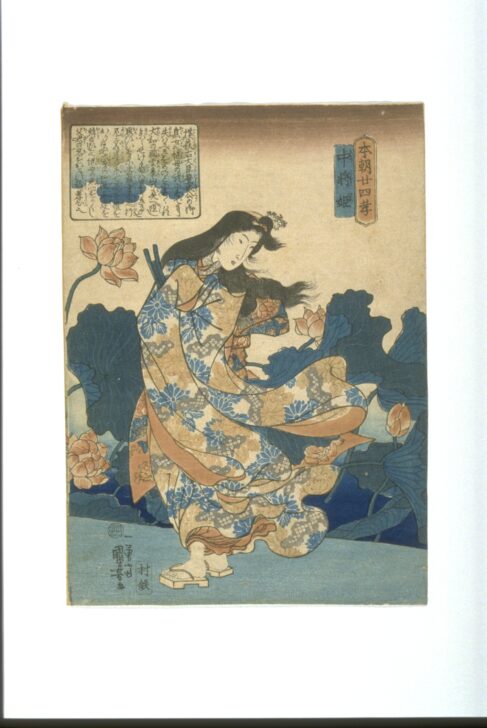Twenty-four Japanese Paragons of Filial Piety: Chûjôhime
Utagawa Kuniyoshi

Description
In the mid-nineteenth century, a new type of female was introduced into the world of the single-sheet print: the legendary heroine, taken from tales of Japan’s distant past. These were part of a larger vogue for "history" prints, and no artist was as prolific or inventive in this genre as Utagawa Kuniyoshi.
The classical Chinese tales about the "twenty-four paragons of filial piety" celebrate the cardinal Confucian virtue of respect for one’s parents. Kuniyoshi invented a "native" version, with twenty-four Japanese protagonists, which also included women—for the first time. Long before there was a "women’s history month," Kuniyoshi’s prints helped to create a canon of heroines whose lives and accomplishments became part of a shared, national heritage.
According to legend, Chûjôhime ("daughter of a high-ranking general") took the tonsure at very young age, in order to pray for her deceased mother’s soul. She secluded herself in an isolated mountain temple. Impressed by her selfless devotion, the bodhisattva Avalokitesvara appeared to her in a dream, and wove a magnificent altar painting out of lotus fibers during one night. In Kuniyoshi’s rendering, Chûjôhime is neither a nun nor in seclusion, but a lovely young woman dressed in the latest fashion. Nonetheless, her identity is made clear by her archaic hairdo and the exuberant lotus blossoms in the background.
M. Graybill
"Courtesans, Cross-Dressers, and the Girl Next Door Images of the Feminine in Japanese Popular Prints"
3/9 - 9/1/02
Usage Rights:
If you are interested in using an image for a publication, please visit https://umma.umich.edu/request-image/ for more information and to fill out the online Image Rights and Reproductions Request Form.